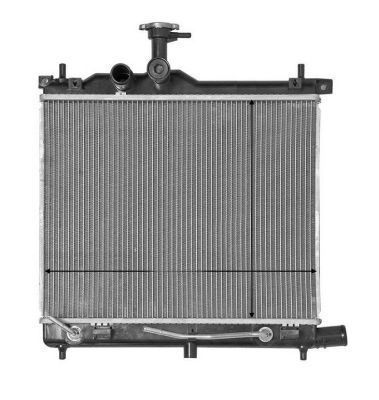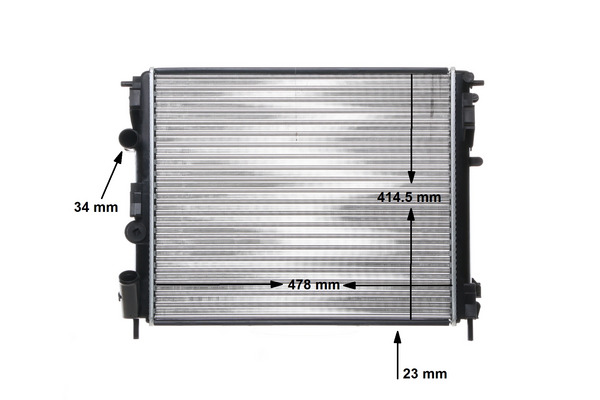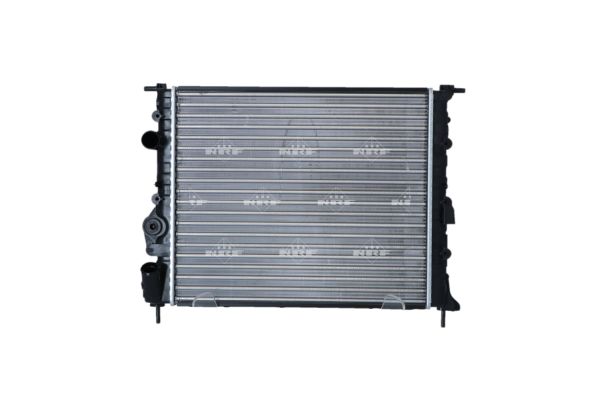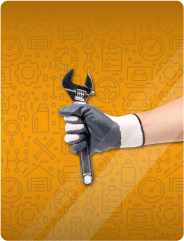Radiators 
Fits RENAULT CLIO Mk II (BB_, CB_) 1.2 16V (BB05, BB0W, BB11, BB27, BB2T, BB2U, BB2V, CB05,...
(2001)
Important compatibility info
| Packaging height | 12.50 cm |
| Function | Radiator, engine cooling |
| Type | Radiator, engine cooling |
| Packaging length | 69.5 cm |
| Packaging width | 51.00 cm |
| Extra Description | BEHR |
| Radiator type | Mechanically jointed cooling fins |
| Core Length | 480 mm |
| Core Width | 415 mm |
| Replaces | CR35000P |
| Core Depth | 34 mm |
| Net Weight | 2176 g |
| Water tank material (radiator) | Plastic |
Additional Information
General Information
The core dimensions / product measurements of the different manufacturers /vendors might be different due to various production technologies. These dimensions / product measurements are not an indication for the performance or the correct fitting accuracy of the product itself.
Important compatibility info
| Radiator type | Mechanically jointed cooling fins |
| Function | Radiator, engine cooling |
| Material | Aluminium |
| Core Length | 430 mm |
| Core Width | 378 mm |
| Core Depth | 23 mm |
| Type | Radiator, engine cooling |
| for OE number | 2140000QAZ |
Important compatibility info
| Radiator type | Mechanically jointed cooling fins |
| Function | Radiator, engine cooling |
| Material | Aluminium |
| Core Length | 480 mm |
| Core Width | 415 mm |
| Core Depth | 23 mm |
| Type | Radiator, engine cooling |
What is a radiator?
A radiator is an essential part of the engine cooling system. The internal combustion process produces huge amounts of heat so to keep the engine temperature regulated liquid coolant is circulated through the engine and the radiator. The radiator is mounted in the vehicle where air flow can pass through it. The air passing through the radiator and its pipes and fins cools down the liquid coolant contained within it. The coolant is then recirculated back around the engine as part of the cooling cycle.
How do I choose the correct radiator?
There can be different radiators listed for the same model of vehicle depending on it’s exact specification. If you are able to obtain the original part number from the radiator that you need to replace you can use that to search and compare new parts that match. If you are not able to find the original part number then we’d advise that you observe the compatibility notes listed by the radiators that are shown as correct.
Here are some compatibility factors to look out for:
Manual, semi or fully automatic transmission
Air conditioning (automatically or manually controlled)
Vehicle manufacture date (this is not the date the vehicle was registered but the date it was made)
Engine number sequence (up to or after as specific number/letter)
VIN (chassis number) sequence (up to or after as specific number/letter)
What brand of radiator should I choose?
The number of aftermarket manufacturers of radiators is limited so there will not be many to choose from. Valeo make radiators for the original car brands and NRF have a great reputation in the engine cooling market place. The brand you choose will likely be down to which part is available at the time you need it. Choosing the part with the longest warranty period and that is within your budget is probably the best choice.
How can I tell my radiator needs replacing?
If coolant is visibly escaping from the radiator that is an obvious indication that the radiator is faulty and requires replacement. If you are not sure if the radiator is faulty we would always recommend that you have your vehicle inspected to see if the radiator is faulty and requires replacement.
Some of the symptoms of a faulty radiator are:
Engine is overheating
Coolant is leaking from the radiator
The engine runs hotter than usual
The coolant is discoloured
Smell of coolant
Radiator pipes or fins are damaged
 Proud to be a UK-based company
Proud to be a UK-based company Contact us
Contact us






